Happy Little Family. Rebecca Caudill. 1947. 107 pages. [Source: Bought]
I loved, loved, loved Rebecca Caudill's Happy Little Family. I bought this one because it was marketed for "those who love Laura Ingalls Wilder's Little House books." In fact, Rebecca Caudill was a contemporary author of Laura Ingalls Wilder. Happy Little Family was published in 1947, just a handful of years after These Happy Golden Years.
Happy Little Family is set in the Kentucky Mountains. The main character, for the most part, is a little girl named Bonnie who is about five years old. Bonnie has lots of siblings: Debby, Emmy, Chris, and Althy. (Readers also get to know the Mother and Father.) Each chapter is set in a different season of the year.
It opens in January with "Crack the Whip" a story about Bonnie wanting to go skating with her siblings and Father. She's "five" now--just turned five--and she wants to do everything her older sisters do. But skating isn't as easy as it looks, and, being the youngest has its advantages and disadvantages.
"The Pink Sunbonnet" is the story set in spring. Bonnie is jealous of her sisters who get new hats. She doesn't exactly want a new sunbonnet even if it is pink. She thinks only "little" girls wear sunbonnets. One really gets a sense of the family in this story. Even more so than in the first chapter. By this point, it was LOVE for me.
"The Arrowhead" is the story set in summer. The theme this time is BRAVERY.
"The Red Toboggan Cap" is the story set in fall. It is a lost and found story....
"The Journey" is the story set in December. Though she's not quite ready for school full-time, Bonnie gets to visit school for the very first time in this one. It is a bit about bravery too, I suppose, and a lot about growing up or trying to grow up! This story had its precious moments. Like when Bonnie thought she'd be brave enough to cross the oh-so-scary bridge by herself if only she could learn how to read and write the word CAT.
© 2016 Becky Laney of
Becky's Book Reviews
McElligot's Pool. Dr. Seuss. 1947/1974. Random House. 64 pages. [Source: Library]
First sentence:
"Young man," laughed the farmer, "You're sort of a fool! You'll never catch fish in McElligot's Pool!"
Premise/Plot. Marco, the young boy in the story, is fishing at McElligot's Pool. Though the farmer warns him that the pool is just where people throw junk, the young boy claims he's not foolish or wasting his time fishing there. He tells how the pool could be--might be--connected to the sea itself. And how right this minute even all sorts of fish might be making their way to the pool for him to catch. He describes hundreds of fish, giving his imagination room to shine. But is the farmer convinced? Are readers?
My thoughts: It is nice to see Marco again. (I'm assuming that this Marco is the Marco of And To Think That I Saw It On Mulberry Street, which was published ten years previously.) Marco's imagination is going strong.
Even though I don't like fishing. I liked this book about fishing. I liked it more than I thought I would.
I might catch a thin fish,
I might catch a stout fish.
I might catch a short
or a long, long, drawn-out fish.
Any kind! Any shape! Any color or size!
I might catch some fish that would open your eyes!
and
Oh, the sea is so full of a number of fish
If a fellow is patient, he might get his wish!
This one won a Caldecott Honor. Half the illustrations are in black and white. Half the illustrations are in color.
Have you read McElligot's Pool? Did you like it? love it? hate it? I would love to hear what you thought of it!
If you'd like to join me in reading or rereading Dr. Seuss' picture books (chronologically) I'd love to have you join me! The next book I'll be reviewing is Thidwick The Big-Hearted Moose.
© 2015 Becky Laney of
Becky's Book Reviews
Miracle on 34th Street. Valentine Davies. Illustrated by Tomie de Paola. 1947/2001. HMH. 136 pages. [Source: Library]
I have almost always loved the movie. I can now say that I love the book. If you love the movie, and, if you love to read, then, you should consider reading Miracle on 34th Street. True, it is not substantially different from the movie. But there are subtle differences, I found. I liked these differences small as they may be. The book is sweet and charming in all the right ways. I liked spending time with Kris Kringle, Doris and Susan Walker, and Fred Gayley. The book moves quickly, from scene to scene to scene. The book may not be as detailed and descriptive as a typical novel; it still has a movie-feel to it: going from scene to scene without pausing to ponder or describe. If I read the book first, would I get a sense, true sense, of the characters? I'm not sure. I'd like to think so. But it's hard to come to this story new. I know this story. I love this story.
© 2014 Becky Laney of
Becky's Book Reviews
The School for Cats. Esther Averill. 1947/2005. New York Review Children's Collection. 32 pages. [Source: Library] The School for Cats was originally published in 1947. It is part of a larger series of books starring the (black) cat Jenny Linsky and her friends. The School of Cats is not the first in the series, but, it is the first in the series that my library actually had. In this "Jenny's Cat Club" book, readers meet Jenny as she leaves her home in Greenwich Village to attend school in the country. She is very, very, very unsure about the whole school thing. But her master, Captain Tinker, wants her "to study cat lore in the country." There is definitely something of an adventure in this one when Jenny runs away from school. But it also contains a lesson on friendship and adapting to new situations.
I enjoyed this one. I look forward to reading others in the series.
Jenny's Moonlight Adventure. Esther Averill. 1949/2005. New York Review Children's Collection. 32 pages. [Source: Library]Jenny's Moonlight Adventure was originally published in 1949. It is part of a larger series of books starring Jenny and her friends. I did not like this book as well as The School for Cats. It is a Halloween adventure. Jenny must prove how brave she is both for herself and for her friends. She reluctantly accepts a job that only she can do. She is to carry a nose flute to a sick friend (another cat, of course). The job is "dangerous" because it requires her to be brave and clever enough to get past several unfriendly neighborhood dogs.
For readers who celebrate Halloween, this one might prove charming.
Jenny Goes to Sea. Esther Averill. 1957/2005. New York Review Children's Collection. 140 pages. [Source: Library]Of the Jenny Linsky books I've read so far, Jenny Goes to Sea is probably my favorite. In this chapter book originally published in 1957, Jenny Linsky and her two brothers, Edward and Checkers, travel the world with their owner, Captain Tinker. These three cats become very good friends with Jack Tar, the ship's cat. These three leave the ship in company with Jack Tar at many of the ports including Capetown, Zanzibar, Singapore, and Bangkok. Adventures come oh-so-naturally.
I definitely recommend this series to cat lovers of all ages.
Jenny and the Cat Club: A Collection of Favorite Stories About Jenny Linsky. Esther Averill. 1973/2003. New York Review Children's Collection. 176 pages. [Source: Library]Jenny and the Cat Club features five stories by Esther Averill. These were originally published in 1944, 1948, 1951, 1952, and 1953. The stories are: "The Cat Club," "Jenny's First Party," "When Jenny Lost Her Scarf," "Jenny's Adopted Brothers," and "How the Brothers Joined the Cat Club."
The Cat Club introduces readers to Jenny Linsky, a "shy little black cat" from New York City. Readers meet Jenny and her owner Captain Tinker. In this adventure, Jenny receives her signature red scarf, a present from her owner who happens to knit. This red scarf helps Jenny gain enough confidence to talk to other cats in the neighborhood. In this one, readers learn about the neighborhood cat club, they are briefly introduced to the other cats, and they learn that members of the cat club must be special.
Jenny's First Party is a story focusing on Jenny and her friend Pickles (the fire cat) teaming up and strolling the neighborhood. Both are looking for fun, fun, fun. But neither have money. (What cat has money?!) They stumble upon a groovy party and a great time is had by all. Readers learn that Jenny can dance a happy little sailor's hornpipe dance.
"When Jenny Loses Her Scarf" is about when Jenny's beloved red scarf was stolen by a dog. The dog, Rob the Robber, refuses to give it back. Jenny seeks help from Pickles the fire cat. Pickles is just the one to help her, it turns out, for justice is dealt out after all. The dog's hangout catches on fire! Pickles retrieves the scarf as he's putting out the fire.
"Jenny's Adopted Brothers" is about when Jenny meets two stray cats: Checkers and Edward. Checkers, readers learn, retrieves things. Edward, we learn, is a poet. Jenny meets these two, feels sorry for them, and introduces them to Captain Tinker. When these two are adopted by the Captain, Jenny feels very jealous! Will having two other cats in the house prove too much?!
"How The Brothers Joined the Cat Club" is obviously about when Edward and Checkers join the club. Jenny is hesitant to include her two new brothers at first. After all, she likes the idea that the club could remain her own little secret and her way to get away from them. But. Being the good little cat that she is, Jenny soon realizes that she could never really keep her brothers from missing out on the awesomeness of the cat club. She helps them discover their talents and introduces them to all her friends.
I liked this one. I did. I like meeting Jenny and the other cats.
The Hotel Cat. Esther Averill. 1969/2005. New York Review Children's Collection. 180 pages. [Source: Library]The Hotel Cat is an enjoyable children's novel by Esther Averill. It was originally published in 1969.
The Hotel Cat stars a cat named Tom. He lives at the Royal Hotel, an eight-story building in New York. It is on the older side. And the hotel isn't doing the best business. But all that happens to change during the novel. Tom who is used to having the place to himself, for the most part, at least in terms of CATS ON THE PLACE discovers that there are cats there with their owners. The first few cats he meets he is rude, very rude. But after Tom's owner, Mrs. Wilkins, talks to him, he decides to be more gracious and welcoming. It isn't long before he meets three cats: Jenny, Edward, and Checkers. And those aren't the only cats from the cat club he happens to meet. A difficult winter has resulted in a lot of broken boilers and frustrated cat-owning homeowners are staying at the Royal Hotel. How convenient!
Tom learns a lot about making and keeping friends in The Hotel Cat.
I liked this one.
Captains of the City Streets. Esther Averill. 1972/2005. New York Review Children's Collection. 164 pages. [Source: Library] Captains of the City Streets is a children's novel by Esther Averill originally published in 1972. Two cats star in Captains of the City Street. In this one, the author provides the back story for two cats who have been a part of essentially the whole series. Sinbad and The Duke. These two stray cats are best buddies. They haven't been "owned" by a human in what seems like a very long time by cat reckoning. They are street cats, traveling cats, going from city to city to city, seeing all there is to see, always seeking handouts, but never becoming dependent on any one human. The two travel to "old New York." They are looking for a place of their own, a safe place to stay. They find it. They also find one old man who dependably gives them food day after day on their own terms. He comes and goes leaving the food, never trying to approach the cats, never pushing a relationship. The two cats slowly but surely decide that maybe just maybe humans aren't all that bad. That is when they stumble upon the Cat Club. They learn that the kind human is Captain Tinker. The first cat they befriend is Macaroni. The two are invited to join the Cat Club, but, are hesitant. Do they want to stick around that long? Do they want the responsibility?
I liked meeting Sinbad and Duke. The stories that focus on Jenny certainly mention these two quite a bit, but, this is the first time that readers really learn about these two in detail. It is a fun book.
Jenny's Birthday Book. Esther Averill. 1954/2005. New York Review Children's Collection. 44 pages. [Source: Library] Jenny's Birthday Book by Esther Averill was originally published in 1954. In this cat club book, Jenny Linsky, our star cat, our shy little black cat with the red scarf, has a special birthday with all of her friends whom we've met through the series. Pickles. Sinbad and The Duke. Florio. To name just a few. It is a lovely birthday. The book itself is sweet, simple, and charming. Especially if you like cats and vintage picture books. I think my favorite illustration is of all the cats dancing the Sailor's Hornpipe in the park.
The Fire Cat. Esther Averill. 1960/1983. HarperCollins. 64 pages. [Source: Own] I enjoyed revisiting The Fire Cat by Esther Averill. I read this one many times as a child. But I had no idea it was part of a larger series of books, the Cat Club series by Esther Averill. The Fire Cat does not star Jenny Linsky. It stars Pickles. Pickles has been a delightful character in almost all of the other books in the series. He is probably one of Jenny's best best friends. In the Fire Cat, readers learn more about Pickles. Was he always a fire cat? Of course not! There was a time he was a hopeless cat that was a little bit bad and a little bit good. One of the firemen takes an interest in him and takes him to the fire station. He is hoping that the chief will allow Pickles to stay. Pickles most definitely wants to stay. He wants to prove himself worthy, so he decides to learn by example. He learns to slide down the pole, for example, he learns how to work a hose. The fire chief is definitely charmed, I imagine cat-loving readers are just as charmed. I certainly was! The Fire Cat is a feel-good read. Readers see Pickles transform from a slightly-naughty homeless cat to a brave and dutiful fire cat. He learns responsibility and compassion. Overall, it's just a good story.
© 2014 Becky Laney of
Becky's Book Reviews
The Twenty-One Balloons. William Pene du Bois. 1947. Viking 180 pages.
There are two kinds of travel. The usual way is to take the fastest imaginable conveyance along the shortest road. The other way is not to care particularly where you are going or how long it will take you, or whether you will get there or not. I should have believed my mother. She's been trying to tell me that this was a good read for many, many years. And she was right. This is a good read. I'm not sure I'd say it was the
best, best book I've ever read. Or the best Newbery I've ever read. But this book is anything but boring! It surprised me in all the right ways.
The hero of this one is Professor William Waterman Sherman. This teacher-turned-adventurer left San Francisco in August of 1883 hoping to spend about a year in his balloon. He'd chosen his design carefully and thoughtfully. And he was so excited at the thought of being away from it all--all the cares, all the stress, all the worries of this world. He wanted FREEDOM and then some. But that wasn't to be...
For an accident leaves him stranded on a "deserted" island. The island's community does NOT want to be discovered by the world, so any visitors are welcomed permanently in the community and renamed. I don't want to give away all the quirks of this one though! But I found this one to be quite a read!
Enjoyable and satisfying...a great way to spend the afternoon.
© 2011 Becky Laney of
Becky's Book Reviews
Mrs. Mike: "The Heartwarming Classic Story of the Boston Girl Who Married A Rugged Canadian Mountie." by Benedict & Nancy Freedman. 1947. 284 pages.
The worst winter in fifty years, the old Scotsman had told me. I'd only been around for sixteen, but it was the worst I'd seen, and I was willing to take his word for the other thirty-four. I enjoyed Mrs. Mike. It's a rugged historical romance novel set in the early twentieth century. It stars Katherine Mary O'Fallon and Seargeant Mike Flannigan of the Canadian Mounted Police. When Katherine Mary goes to visit her uncle in Canada, she didn't expect to fall in love with anyone. But when she meets this Mountie, well, it's love. Her love for him will be demanding, will require much sacrifice on her part. For this city girl will be forced into the wilderness, away from everything she's ever known and loved. She'll endure the harshest circumstances, the cruelest hardships. But because of love--her deep love--for her husband, life is good. But their love will face challenges. Realistic challenges, I believe, but heartbreaking ones.
As I said, I enjoyed this one. I enjoyed the historical aspects of this one. I also liked the romance of it. It was a good, clean read. A book that almost anyone of any age could enjoy--if historical romance is their genre of choice. (I know not everyone *loves* historical romance as much as I do!)
My favorite quote:
But death does not stand at the end of life, it is all through it. It is the fear of losing, the knowledge of losing that makes love tender. (276)
© 2011 Becky Laney of
Becky's Book Reviews

Steinbeck, John. 1947. The Wayward Bus. 272 pages.
 For my third Steinbeck, I chose The Wayward Bus. This is an interesting--though not particularly charming--story of disgruntled individuals brought together by a seemingly-never-ending bus ride. While the book technically revolves around a bus ride, the focus of the story is more on the waywardness of the people. How each of Steinbeck's characters are unhappy each in their own way. The book examines humanity--up, close, and a bit too personal. Each character is distinct in that they all have their own issues, own back stories, own hopes and dreams. All are on the bus for different reasons. All are on different journeys. But they're all similar in that they are all dissatisfied with their lives. No one is living their dream life. No one is happy with what they have.
For my third Steinbeck, I chose The Wayward Bus. This is an interesting--though not particularly charming--story of disgruntled individuals brought together by a seemingly-never-ending bus ride. While the book technically revolves around a bus ride, the focus of the story is more on the waywardness of the people. How each of Steinbeck's characters are unhappy each in their own way. The book examines humanity--up, close, and a bit too personal. Each character is distinct in that they all have their own issues, own back stories, own hopes and dreams. All are on the bus for different reasons. All are on different journeys. But they're all similar in that they are all dissatisfied with their lives. No one is living their dream life. No one is happy with what they have.  All want something more, something better. Some are unhappy with themselves. Some are unhappy with their circumstances. Some just want to escape and start anew. A few just want to hear themselves talk. Some long for freedom. Some long for love. Some long for fame. Some just long for different--they're bored with the sameness of their life.
All want something more, something better. Some are unhappy with themselves. Some are unhappy with their circumstances. Some just want to escape and start anew. A few just want to hear themselves talk. Some long for freedom. Some long for love. Some long for fame. Some just long for different--they're bored with the sameness of their life.
Who are the characters? There are Juan and Alice Chicoy, a miserably unhappy married couple. Juan is the bus driver. Alice runs the diner part of the gas station. Pimples "Kit" Carson. A young teenage hormone-driven boy. Norma, a mousy waitress with delusions of grandeur--her obsession of choice? Clark Gable.  These four live and work at Rebel Corners. (Alice is not along for the trip. She's back home enjoying her solitude.) The passengers include a family of three on their way to Mexico--businessman, frigid wife, rebellious and lusty daughter, a traveling salesman, a tramp of a lady traveling under a false name, an old man who complains day in and day out who can't agree with anyone about anything. I think that about covers it. Unless I missed one or two silent ones.
These four live and work at Rebel Corners. (Alice is not along for the trip. She's back home enjoying her solitude.) The passengers include a family of three on their way to Mexico--businessman, frigid wife, rebellious and lusty daughter, a traveling salesman, a tramp of a lady traveling under a false name, an old man who complains day in and day out who can't agree with anyone about anything. I think that about covers it. Unless I missed one or two silent ones.
The bus ties them all together. They're all on their way to somewhere else. But there are delays caused by weather and road conditions.
What is the book about? Love. Hate. Lust. Anger. Disappointment. Bitterness. Frustration. Insecurity. Addiction. Ambition. The book can almost be read as a series of vignettes. If you're a reader intrigued by humanity--if you read books for their insight on the human condition or the human psyche--then this one might be right for you. It's also an interesting snapshot of the times in which it was written. I think it would take another reading for me to fully get everything the book was trying to capture.
 It is interesting to me--and I hope to you too--to see how cover images have chosen to capture what the book is about. Which of these covers is your favorite? Which one would make you want to read the book? I like the prettiness of this Penguin cover. But I think the black-and-white one shows the angst of the book better. The why-me-ness of it. I think the two with the man and woman (in the hay) capitalizes on the theory that sex sells... choosing to focus on one of the more 'sensational' and 'lusty' scenes in the book.
It is interesting to me--and I hope to you too--to see how cover images have chosen to capture what the book is about. Which of these covers is your favorite? Which one would make you want to read the book? I like the prettiness of this Penguin cover. But I think the black-and-white one shows the angst of the book better. The why-me-ness of it. I think the two with the man and woman (in the hay) capitalizes on the theory that sex sells... choosing to focus on one of the more 'sensational' and 'lusty' scenes in the book.
I liked the style of the book--gritty though it may be. I could almost visualize it.
© Becky Laney of Becky's Book Reviews
If you're reading this post on another site, or another feed, the content has been stolen.



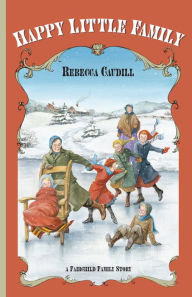
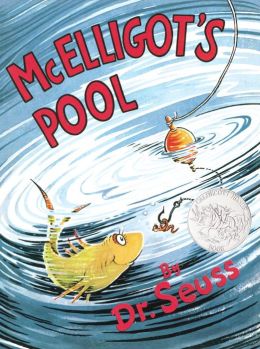

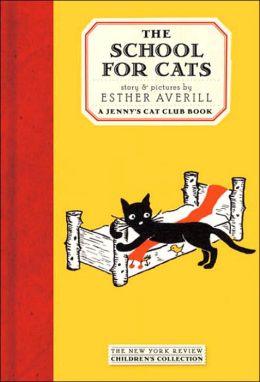
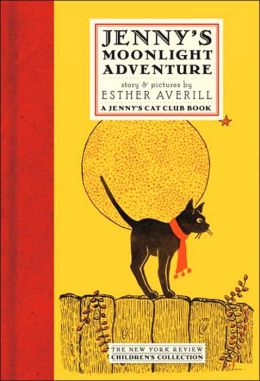

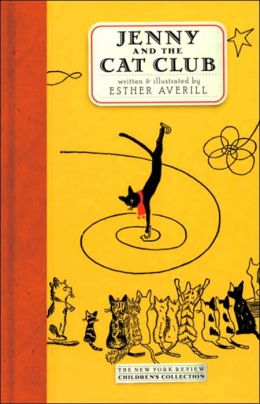
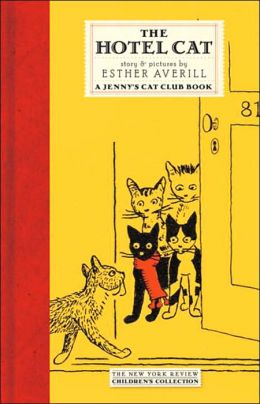

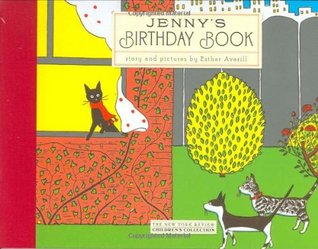


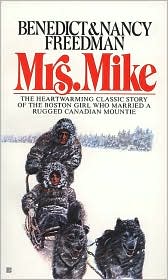





I loved this book when I was little. It was one of my favorite adventure stories.